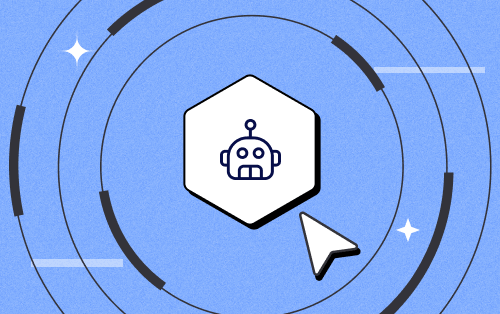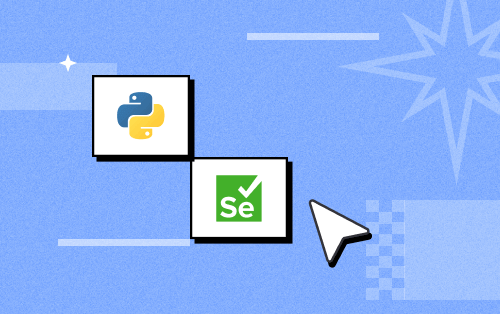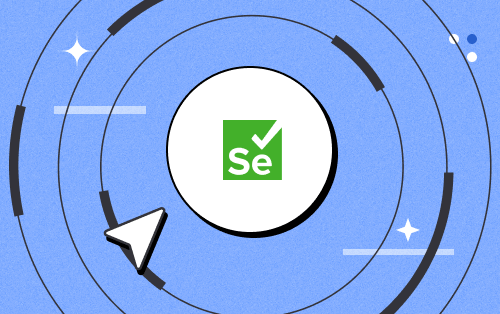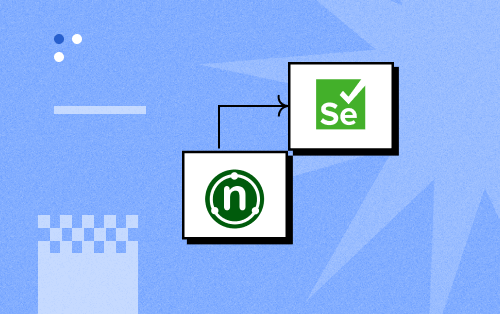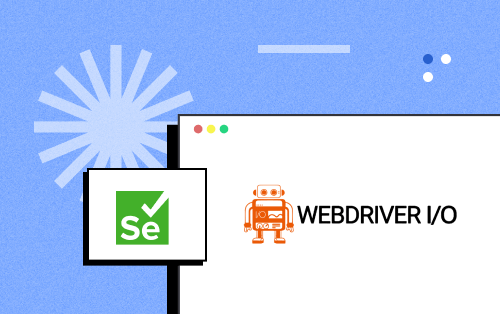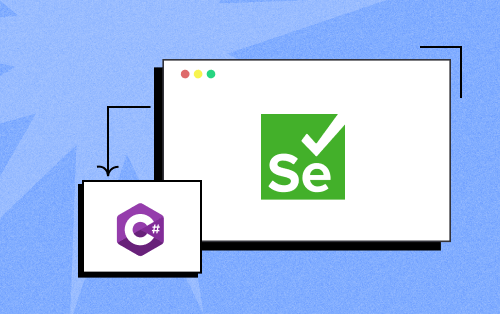- Testing Basics
- Home
- /
- Learning Hub
- /
- 30+ CI/CD Interview Questions
- -
- May 15 2023
30+ CI/CD Interview Questions
Here's Top 30+ CI/CD Interview Questions and Answers that will help you boost your confidence in an Interview
- General Interview Questions
- CI/CD Tools Interview Questions
- Testing Types Interview Questions
- Testing Framework Interview Questions
OVERVIEW
Continuous Integration (CI) and Continuous Deployment (CD), also known as Continuous Delivery (CD), are software development approaches that automate the process of creating, testing, and deploying software. These methods ensure that the production environment is rapidly and effectively updated with changes to the codebase while reducing the chance of introducing problems. Due to its capacity to speed up software development procedures, enhance code quality, and shorten time to market, CI/CD practices have grown in popularity within the software development sector.
If you're preparing for a CI/CD interview, it's essential to have a good understanding of the key principles and tools involved in these methodologies. This questionnaire on CI/CD interview questions can help you prepare for your interview by providing a comprehensive overview of the most commonly asked questions in this area. Whether you're new to CI/CD or have years of experience, this resource can help you showcase your expertise and increase your chances of landing your dream job.
What is CI/CD?
Continuous Integration/Continuous Delivery, often known as Continuous Deployment or CI/CD, is a software development methodology that intensely focuses on automation and ongoing improvement throughout the development and deployment process. It includes regularly integrating code changes (CI) and automating the delivery of those changes to staging or production environments (CD).
Developers regularly merge their code changes into a shared repository in CI/CD, starting an automated build and test process. As a result, the codebase is kept stable and dependable, and integration problems are caught early on. Continuous Delivery goes one step further by automating the deployment of changes to production or staging environments, enabling quick and reliable releases. Contrarily, Continuous Deployment pushes automation to its limits by automatically delivering changes to production without human interaction.
CI/CD practices allow faster development cycles, higher code quality, and greater agility in responding to customer feedback and market demands. Organizations can reduce errors, improve collaboration among teams, and deliver software changes more efficiently and reliably by automating processes and ensuring frequent integration and deployment.
List of CI/CD Interview Questions
Note : We have compiled all the CI/CD Interview Questions for you in a template format. Feel free to comment on it. Check it out now!!
CI/CD Interview Questions for Beginners Level
In a beginner-level CI/CD interview, you must showcase your understanding of how CI/CD promotes efficient and reliable software delivery. You can expect questions about the benefits of CI/CD, the components of a CI/CD pipeline, and how automation plays a crucial role in the process. By mastering these concepts, you can showcase your ability to contribute effectively to the development lifecycle and deliver high-quality software changes.
What is CI/CD?
Continuous Integration/Continuous Delivery is known as CI/CD. It's an approach to software development where developers often integrate their code changes into a central repository before using automated testing and deployment to quickly and effectively deliver new features and problem fixes to production.
What are the benefits of CI/CD?
CI/CD enables teams to deploy software more confidently and quickly. Automation testing and deployment lowers the chance of creating errors and flaws, and it speeds up the development process by making it simpler to communicate and exchange code changes.
What is Continuous Integration?
Continuous Integration is a development method where developers frequently integrate their code changes into a shared repository. To detect and correct mistakes as soon as feasible, each integration is then tested using automated build and test scripts.
What is Continuous Delivery?
A software development method, "Continuous Delivery," involves automatically building, testing, and getting code updates ready for production release. This guarantees that the software is constantly deployable and available for delivery to consumers at any moment.
What is the difference between Continuous Integration and Continuous Delivery?
Continuous Integration ensures that code modifications can be successfully integrated into a shared codebase. Code updates can be immediately deployed to production at any moment, thanks to continuous delivery.
What is a build pipeline?
When a piece of code transitions from development to production, it goes through a set of processes called a build pipeline. These procedures often involve creating the code, conducting automated tests, and releasing it to the staging and production environments.
What is a deployment pipeline?
When code changes are released into production, they proceed through a deployment pipeline, a set of procedures. The creation of the code, the execution of automated tests, and the deployment to live environments are among these procedures.
What is version control?
Version control is an approach to keep track of changes made to files or programs over time. It makes it possible for different developers to work independently on the same codebase simultaneously.
What is Git?
Git is a popular version control tool developers use to keep track of code changes and work together on software projects. Developers can use it to track changes to code over time, combine modifications from different developers, and go back to earlier versions if necessary.
What is a Git repository?
A Git repository is a storage where all the code alterations and version histories for a particular project are kept. Developers can clone this repository to their local computers so they can work on the code there, make changes, and then submit the updated version back to the main repository.
CI/CD Interview Questions for Intermediate Level
As you prepare for an intermediate-level CI/CD interview, you will likely have already gained familiarity with the fundamentals of CI/CD and its core concepts. Now, it's time to deepen your understanding and tackle more advanced topics. We will explore subjects beyond the basics in this set of intermediate-level CI/CD interview questions and answers.
What are the key components of a CI/CD pipeline?
The key components of a CI/CD pipeline include source control, build automation, testing, and deployment automation. Source control manages to version and manages changes to the code. At the same time, build automation creates executable binaries, testing automates the validation of the code's functioning, and deployment automation releases the code to the live environment.
What is the difference between a build and a release?
A release is moving an executable binary from a development environment into a production one. A build is a process of converting source code into an executable binary. While the release process is usually manual and only happens sometimes, the build process is typically automated and happens several times daily.
What is a Jenkins File?
A Jenkins file is a text file that contains a pipeline's configuration. It outlines the pipeline's stages, such as build, test, and deployment, as well as the actions that must be taken at each one.
What is a container?
An application's code, dependencies, and configuration files are all included in a container, which is a small, standalone executable package. Containers are simple to deploy and administer because they are separated from the host system and other containers.
What is Docker?
A major platform for creating, packaging, and deploying applications in containers is Docker. It offers tools and services for creating, deploying, and managing containerized applications across various environments.
Also, check out this tutorial: "Cypress Docker: A Step-by-Step Guide With Examples" for a practical guide on using Cypress with Docker.
What is Kubernetes?
Kubernetes is an open-source platform for deploying, scaling, and managing containerized applications. It offers a flexible, automated method to manage containerized workloads in various settings, from development to production.
What is blue-green deployment?
Blue-green deployment is a deployment approach in which new versions of an application are deployed and tested in two identical environments, blue and green. Traffic is shifted from the blue environment to the green environment, which becomes the new production environment when the new version has been examined and approved in the green environment.
What is canary deployment?
Canary deployment is a method of application deployment in which just a small percentage of production traffic is sent to a new version of the application, with the majority of traffic still being handled by the older version. As a result, the new version can be tested and validated before being implemented across the board in the production environment.
What is code coverage?
Code coverage is a measure of how much of the code in a software application is covered by automated tests. It is typically expressed as a percentage, with higher percentages indicating greater test coverage and lower risk of defects.
What is the difference between unit tests and integration tests?
When a component or module of an application is tested, it is called a unit test. Integration tests, on the other hand, check how well many components or modules work together. Compared to unit tests, integration tests often cover more of the application and may test several different services or components.
CI/CD Interview Questions for Advanced Level
As an experienced professional in CI/CD, you are now ready to tackle the most complex and advanced topics in this field. This segment will help you to confidently navigate advanced CI/CD interview questions and showcase your expertise in driving continuous improvement and innovation. Demonstrating your in-depth understanding of advanced CI/CD concepts will establish you as a valuable asset, capable of delivering high-quality software and driving efficiency in the software development lifecycle.
What is infrastructure as code?
Infrastructure as code defines and manages IT infrastructure using code rather than manually configuring servers and other infrastructure components. This method allows automating, versioning, and maintaining consistency across several environments.
What is GitOps?
GitOps is a development and deployment technique where all infrastructure and application configurations are maintained in Git repositories. This method enables the automated deployment of infrastructure updates based on coding changes.
What is a microservices architecture?
A microservices architecture is an approach to developing software in which an extensive program is divided into smaller, independently deployable services that communicate via APIs. Since each service can be designed, tested, and deployed independently, this method allows for better flexibility and scalability.
What is chaos engineering?
Chaos engineering is the practice of intentionally introducing failures and other disruptions into a system to test its resilience and identify weaknesses. This approach enables organizations to proactively identify and address potential issues before they occur in production.
What is observability?
Observability is the ability to understand and diagnose the behavior of a complex system, such as a software application, using real-time monitoring and metrics. The system's performance or availability can be affected, and it lets teams quickly identify and fix any problems.
What is a canary analysis?
Canary analysis is an approach for testing the impact of changes to a production system by gradually introducing the changes to a small subset of users or traffic while measuring the impact on key performance indicators. Teams can validate the effects of changes using this method before implementing them across the board in the production environment.
What is a feature flag?
A feature flag is a technique for selectively enabling or disabling features in an application depending on specific circumstances, including user roles, location, or A/B testing. Teams can roll out new features to bigger groups by using feature flags to release them gradually, test them with a smaller group of users, and refine them as necessary.
What is the role of configuration management in CI/CD?
Configuration management is managing and maintaining the configurations of software systems and infrastructure components, such as servers, databases, and networks, using automation and versioning. In CI/CD pipelines, configuration management technologies like Ansible, Puppet, and Chef are frequently used to ensure that infrastructure and application configurations are up-to-date and consistent across various environments.
What is the role of automation in CI/CD?
A crucial component of CI/CD is automation, which enables teams to quickly and consistently create, test, and deploy changes with little help from manual intervention. It also ensures process uniformity and lowers the possibility of human error.
What is the role of testing in CI/CD?
Testing is a crucial part of CI/CD as it ensures that changes are verified before being deployed to production, lowering the risk of bugs and other problems. Teams can test changes quickly and consistently using automated testing and little manual work.
How do you ensure the security of the CI/CD pipeline?
Several best practices go into making the CI/CD pipeline secure. Here are a few of them:
- To prevent unauthorized access to the pipeline and its components, access controls and authentication procedures must be put in place.
- Finding security flaws by checking code and dependencies for vulnerabilities and using static and dynamic analysis methods.
- Sensitive data, such as secrets and credentials, should be stored and transmitted via secure methods.
- Implementing a safe build process that includes using trustworthy sources for dependencies and signing builds to confirm their legitimacy.
- Conduct routine inspections and analyses of the pipeline's security.
What are some challenges in implementing CI/CD?
Some challenges in implementing CI/CD include:
- Determining that the test suite is fast and reliable enough to enable frequent integration and deployment.
- Balancing the demands of speed and thorough testing and validation.
- Keeping dependencies under control and ensuring they are consistent across all environments.
- Ensuring that the pipeline is protected from attacks and unstable in case of failure.
- Coordinating and informing stakeholders and teams about changes.
- Addressing cultural and organizational barriers to adopting CI/CD practices.
How do you measure the success of a CI/CD pipeline?
Measuring the success of a CI/CD pipeline involves tracking and analyzing several metrics, such as:
- Lead time: The amount of time it takes from a code change to a production release.
- Deployment frequency: The number of deployments that take place in a certain amount of time.
- Mean time to detect (MTTD): Particular period of time.
CI/CD Pipeline Best Practices
Implementing a CI/CD pipeline involves several best practices that can help ensure quality, reliability, and security. Here are some of the essential CI/CD pipeline best practices:
- Automate as much as you can: By streamlining the build, test, and deployment processes, you can cut down on the time and effort needed to release updates to live systems while also lowering the possibility of human error.
- For all code and configuration, use version control: Teams can track changes to code and configuration files, work productively together, and roll back changes as necessary with the help of version control systems like Git.
- Maintain a fast and reliable test suite: To validate changes rapidly and find errors before they go into production, a fast and reliable test suite is crucial. It's crucial to strike a balance between speed and thoroughness to prevent false positives or negatives.
- Use continuous integration: Integrating changes into the codebase frequently can help you find and resolve conflicts and lower your risk of future integration problems.
- Use automated testing to verify changes: Using automated testing can help verify changes reliably and consistently across various environments and configurations.
- Implement canary or blue-green deployment tactics: Teams can release changes gradually, test them with a limited group of users, and roll them out to larger groups as necessary using blue-green and canary deployment methodologies, which lower the likelihood of production problems.
- Monitor and measure performance and availability: Monitoring and measuring system availability and performance in real time enables speedy problem identification and resolution, ensuring that the system is operating at peak efficiency and satisfying user needs.
- Implement best practices for security: Access controls, authentication protocols, vulnerability scanning, safe data storage, and secure data transmission should all be high priorities in CI/CD pipelines.
Conclusion
CI/CD has evolved into a crucial component of contemporary software development methodologies, enabling businesses to deploy software updates fast and reliably. The development process is streamlined, code quality is increased, and new features and enhancements are released more quickly with the implementation of CI/CD. CI/CD reduces errors, improves team cooperation, and creates quicker feedback loops by automating the build, test, and deployment processes.
During a CI/CD interview, showcasing a solid understanding of the key concepts, tools, and best practices is essential. It includes knowledge of version control systems, build servers, testing frameworks, and deployment automation tools. Demonstrating familiarity with continuous integration, continuous delivery, and continuous deployment principles will set you apart.
CI/CD will remain a critical component for organizations aiming to stay competitive. It is essential to stay updated with emerging technologies and industry trends, continuously improving your skills and knowledge in CI/CD to effectively contribute to the success of your organization and deliver high-quality software products efficiently.
Ready to transform your software delivery process? Check out our CI/CD testing guide, featuring its significance, principles, and best practices.
Frequently asked questions
- General
Did you find this page helpful?
More Hubs
Try LambdaTest Now !!
Get 100 minutes of automation test minutes FREE!!







